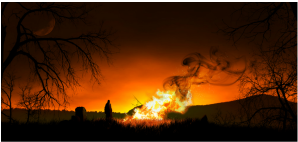
Samhain is a Irish Celtic word believed to mean “summer's end”. (Sorry to all Supernatural fans, there was no god named Samhain!) For the Celts, Samhain marked the new year on November 1st, though celebrations started at sundown on October 31st.
The ancient Celts would give their homes a good “fall” cleaning and extinguish their fires during the day on the 31st. This allowed them to start the new year fresh and clean. At sunset, a giant bonfire would be lit and the formal ceremonies would begin. Sacrifices of crops and livestock would be burned for the Celtic deities. The people wore costumes and would dance around the fire, playing out the cycle of life, death and rebirth.
There were three purposes to the costumes. It was believed that souls were set free from the Land of the Dead during the eve of Samhain and the costumes were worn to honour these souls. The costumes also allowed them to hide from the trickery of malevolent spirits. A third reason for the costumes was as an homage to the Celtic deities.
When the celebration was over, each family would take a piece of the sacred bonfire home. Their hearth fires were rekindled using this flame to help protect the home and its occupants during the dark winter months. The families would then place food and drink outside the door, to appease roaming spirits.
The ancient Celts would give their homes a good “fall” cleaning and extinguish their fires during the day on the 31st. This allowed them to start the new year fresh and clean. At sunset, a giant bonfire would be lit and the formal ceremonies would begin. Sacrifices of crops and livestock would be burned for the Celtic deities. The people wore costumes and would dance around the fire, playing out the cycle of life, death and rebirth.
There were three purposes to the costumes. It was believed that souls were set free from the Land of the Dead during the eve of Samhain and the costumes were worn to honour these souls. The costumes also allowed them to hide from the trickery of malevolent spirits. A third reason for the costumes was as an homage to the Celtic deities.
When the celebration was over, each family would take a piece of the sacred bonfire home. Their hearth fires were rekindled using this flame to help protect the home and its occupants during the dark winter months. The families would then place food and drink outside the door, to appease roaming spirits.
Contrary to popular belief, Samhain and Hallowe'en are not the same thing, though they do share many of the same customs and traditions. Hallowe’en originated as a Catholic Church sanctioned holiday designed to replace the pagan Samhain. Pope Boniface IV designated November 1st as “All Saints Day”, to honour saints and martyrs. October 31st became “All Hallows Eve”, eventually becoming Hallowe'en. A couple of centuries later, November 2nd became “All Souls Day”, a day to honour the dead. All Souls Day is celebrated with big bonfires, costumes and parades, very similar to Samhain. Some of the other traditions of present day Hallowe'en, owe their origins to both pagan and Christian sources. I've already mentioned bonfires, costumes, parades and dancing; but there's also jack'o'lanterns, trick-or-treating, bobbing for apples, black cats, and the colours orange and black
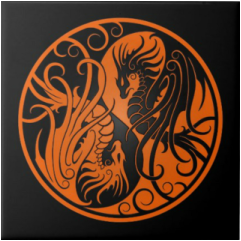
Many believe the church labelled the colour black as being “evil and dangerous” and representational of all things demonic as a way of converting pagans to Christian belief. This stigma has continued to this day, but pagans commonly use the colour black in protection rites. Black is a sacred colour to some of the gods of the underworld, and to the crone goddess. Black can represent death, but most pagans don't perceive death as evil. It also represents darkness, specifically the darkest part of the year until Yule, when the days start to become longer again. In this aspect, blackness means rest, introspection and wisdom.
The colour orange is simpler to explain. At this time of the year, there's a lot of orange to be seen! The leaves on the trees, many of the gourds in the fall harvest, the flames of the Samhain bonfires. It's a colour of transition, from summer to autumn, from life to death, from light to dark.
The colour orange is simpler to explain. At this time of the year, there's a lot of orange to be seen! The leaves on the trees, many of the gourds in the fall harvest, the flames of the Samhain bonfires. It's a colour of transition, from summer to autumn, from life to death, from light to dark.
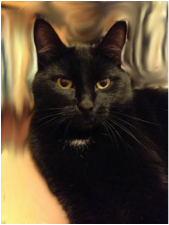 My little girl - Nyx
My little girl - Nyx Black cats became associated with witches in the Middle Ages, and there are many theories on how it came about. Cats were sacred to the ancient Egyptians, often worshipped as gods. The goddess Bast is often depicted as a black cat. The Norse goddess Freya had a chariot pulled by two black cats. The Roman goddess Diana turned herself into a black cat on more than one occasion. In Irish and Scottish folklore, there appears a creature know as the Cat Sidhe, or Cat Sith, an all black cat, with a white spot on its chest. It is described as being as large as a dog and displays itself with its bristles erect and back arched. A watch called Feill Fadalach (Late Wake) was held due to the belief that the Cat Sith would steal the souls of the dead before the gods could claim it unless the body was guarded until burial. Interestingly, many believe cats to be psychopomps, responsible for guiding spirits to the afterlife and acting as messengers between the living and the dead.

When the Romans conquered and ruled the Celtic lands, many of the traditions of both cultures were influenced and mixed with the other. The Roman goddess of fruits and trees, Pomona, had a day of honouring that was combined with the Samhain celebrations. Apples were sacred to Pomona and were used to predict marriages. Young singles would try to bite into an apple floating in water or hanging from a string. The first person to succeed would be the next to marry. The apple is also special to pagans for another reason. When you slice an apple in half, the seeds form a pentagram shape.
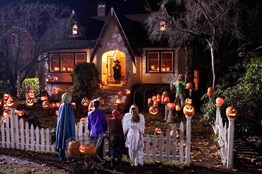
Trick-or-treating is actually thought to originate from a Christian custom. During early All Souls Day parades in England, poor citizens would beg for food. Families would give them “soul cakes” in return for prayers for the family's dead relatives. I've also mentioned the custom of leaving food and drink outside the door for roaming spirits. This is another possible origin of the “treat”. In that case, the second portion was an addition of the Christians, who claimed that the dead who didn't receive a treat would play a malicious “trick” on the inhabitants of that house.
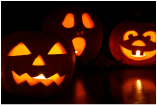
Probably the most famous Hallowe'en tradition is the jack-o-lantern, and the origins of this one are unsure. In some cultures, people would light candles for the dead to follow. The candles were placed on the ground in hollowed out gourds. Some say this evolved into the modern day jack-o-lantern. There is also a Christianized Irish myth about a man named “Stingy Jack”.
| Stingy Jack was a miserable old drunk who played tricks on people of any shape or size. One night, Stingy Jack and the Devil enter a pub to have a drink. Jack convinces the Devil to turn himself into a coin to pay for the drinks. But instead of using the coin, Jack slipped it into his pocket and next to a silver cross. The cross prevented the Devil from changing back into his original form. But Jack eventually freed the Devil, under the condition that he would not bother Jack for one year. And if Jack should die during that year, the Devil would not claim his soul. And the Devil agreed to these terms. The next year, Jack again tricked the Devil. This time, the Devil climbed into a tree to pick a piece of fruit. While he was up in the tree, Jack carved the sign of the cross into the bark so that the Devil could not come down. Once again, Jack struck a bargain with the Devil. He would free the Devil from the tree if he promised not to bother Jack for ten more years. And if Jack died during those years, the Devil would not claim his soul. And the Devil again agreed to these terms. Not long after this, Jack did indeed die. But because of his trickery, God would not allow him into heaven. Keeping his word not to take his soul, the Devil also would not allow Jack into hell. Instead, the Devil sent Jack out into the darkness of the world between worlds with nothing but a burning piece of coal. Jack placed the coal into a carved out turnip and has been roaming the Earth ever since. The Irish began to refer to Jack's ghostly figure as "Jack of the Lantern," and then, simply as "Jack O'Lantern." |
The Irish and Scottish people began carving scary faces into turnips and potatoes and placing them into windows and doorways to frighten away wandering evil spirits. In England, they used large beets. When immigrants brought the tradition to America, they found the pumpkin, and that became the familiar jack-o-lantern. The evolution of the jack-o-lantern continues today, from simple faces carved into the pumpkin to incredibly complex artworks done by talented artisans.

Today, Samhain is one of the most sacred of the sabbats and is considered to be the witches New Year. Many believe that the veil between this world and the next is at it's thinnest point on Samhain, so this is the time to honour the dead and to attempt communication. It is also a time to welcome the Goddess as Crone and to honour the God in the Underworld.
Rituals symbolizing the cycle of life, death and rebirth are common and this is also a good time for a home cleansing. But most of the traditions and rites surrounding Samhain centre on honouring the dead. Many hold a ritual to remember their ancestors by decorating their altar with family pictures and heirlooms and reciting their genealogy. Others focus on remembering lost loved ones. Some also hold vigil for the forgotten dead, those who are unknown, or have no one left to mourn them. Of course no one says you have to pick, you can do some or all of these things.
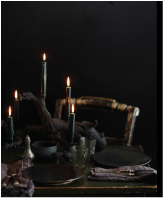
One of my own favourite traditions at Samhain is the Dumb Supper. As the name implies, this is a meal held in complete silence. The table should be set formally, preferably all in black, or at least predominantly in black. The head of the table is reserved for the spirits, and the chair should be shrouded with a black or white cloth. Tea light candles should be placed to represent each of the specifically invited spirits, and I also place at least one to represent others that may drop in. Don't light them yet. A small cauldron or other fireproof container should also be placed at the spirit setting. Because no one may speak, items should be placed in easy reach of each guest. Each of the guests that you invite should be asked to bring a note including what they wish to say to their loved one.
I hold the Dumb Supper after all other rituals are done. Once we enter the dining area, no one may speak. As each person enters, they take a moment to stop at the spirit chair to show their respect, light the candle that has been placed for their loved one and offer a silent prayer to the dead. The host/ess sits across from the spirit chair, the others sit where they please. Once everyone is seated and the meal is blessed, the host/ess serves, beginning with the spirit setting and then continuing from oldest to youngest and finally themselves. No one eats until all have been served.
I hold the Dumb Supper after all other rituals are done. Once we enter the dining area, no one may speak. As each person enters, they take a moment to stop at the spirit chair to show their respect, light the candle that has been placed for their loved one and offer a silent prayer to the dead. The host/ess sits across from the spirit chair, the others sit where they please. Once everyone is seated and the meal is blessed, the host/ess serves, beginning with the spirit setting and then continuing from oldest to youngest and finally themselves. No one eats until all have been served.
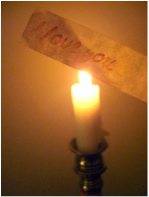
Once the meal is done, each guest should bring out the note that they brought. Go to the head of the table and burn the note in the flame of the candle that stands for your loved one. (The burning note should be placed in the cauldron/container.) Once the guest returns to their seat, the next guest goes up and so on. As hostess, I usually have a note for the extra candle as well as my own. Once everyone has had a turn, we join hands and offer a silent prayer for the dead. As the guests leave, still in silence, they should stop at the spirit chair one more time and offer their goodbyes. Once everyone is gone from the dining area, I close the Samhain celebrations and open the circle. The meal at the spirit setting is then taken outside and left as an offering. The ashes of the notes are given to the wind.
Samhain blessings to you and those you love, both in this world and the next. May the turning of the wheel bring you good fortune and great joy!
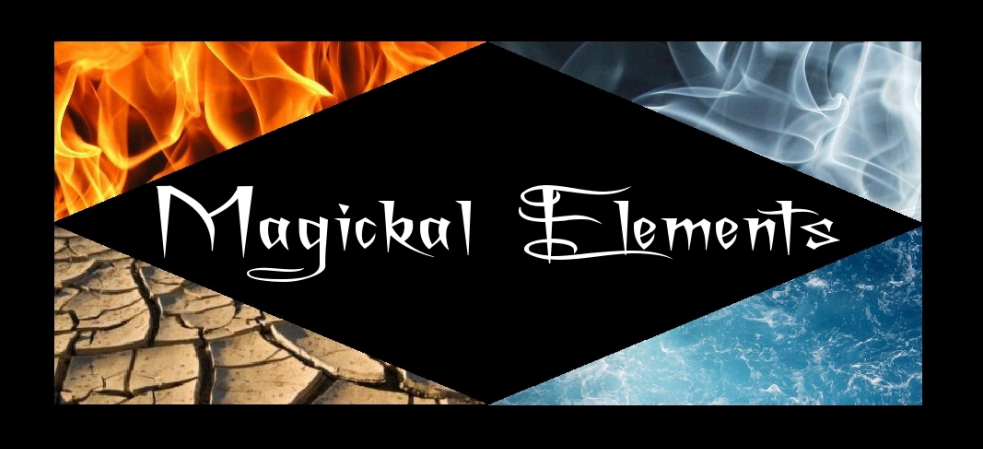
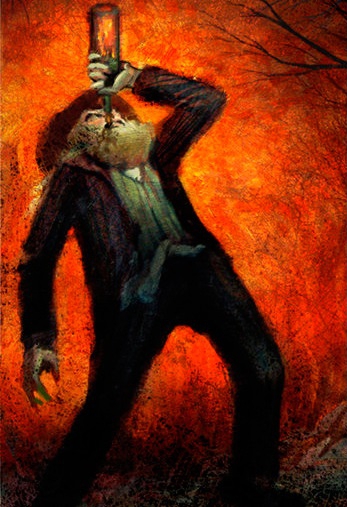

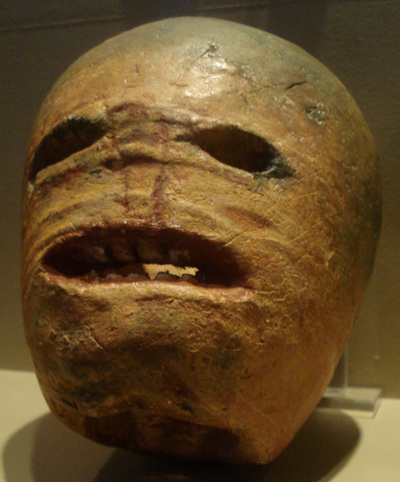
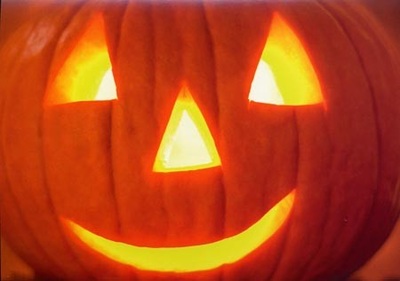
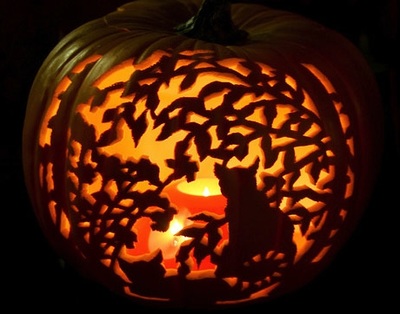
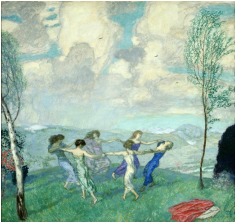
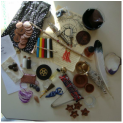
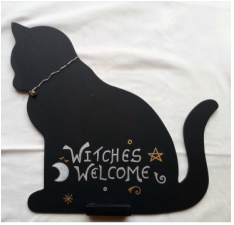


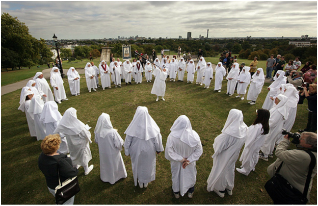
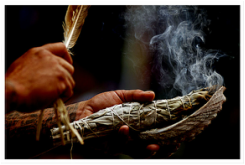
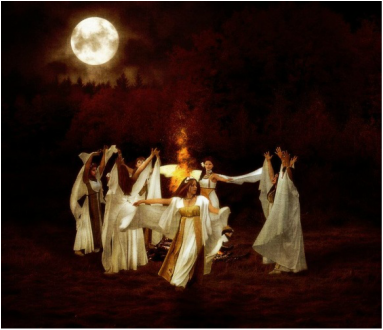
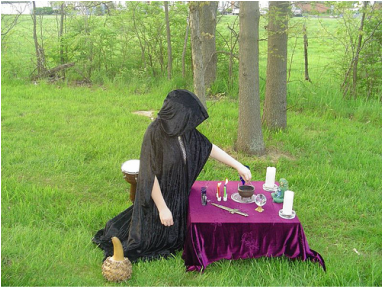

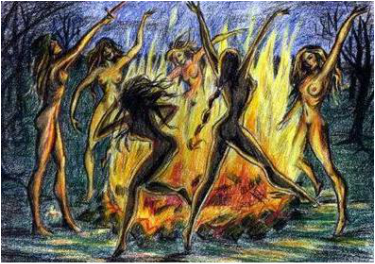
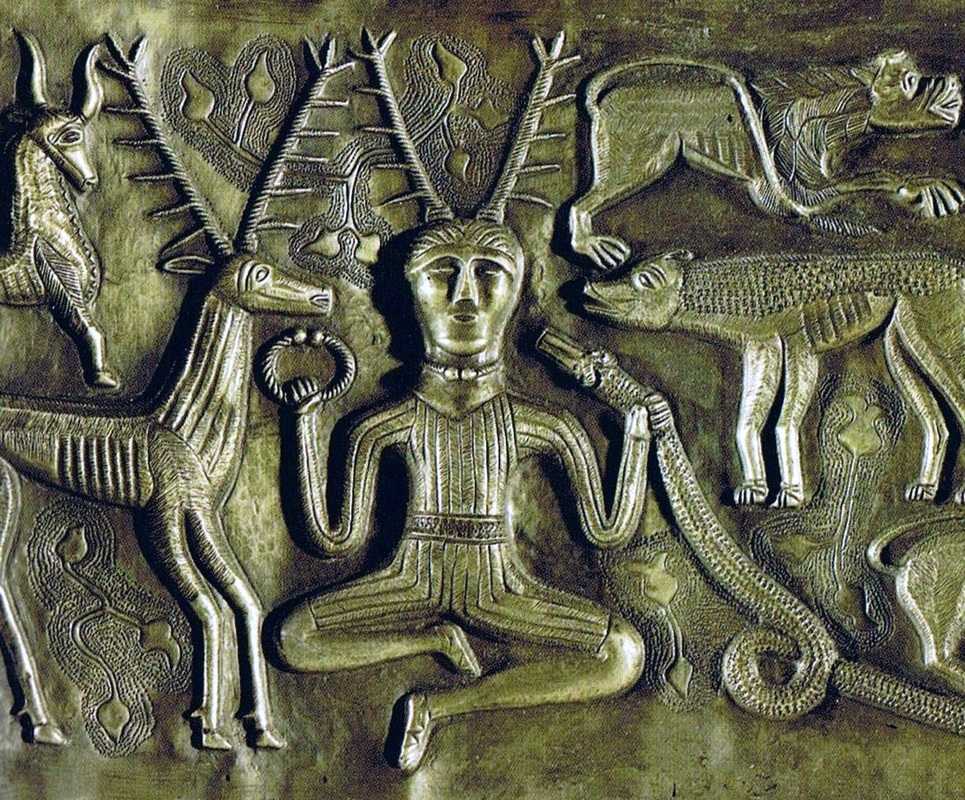
 RSS Feed
RSS Feed
